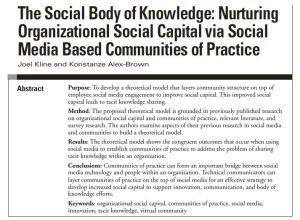Imagine a megaphone…designed to blast sound indiscriminately into all ears within earshot with the expectation for everyone to find a tune or, at minimum, a beat. Imagine that going on all day and all night at high volume. Ouch! We’d all develop tinnitus.
Now imagine the megaphone of the future. Instead of painful noise, it amplifies comprehensible, sensible data only to those who actually want it, need it, appreciate it and are inspired by it. What about if this data were curated knowledge with built-in ethos, pathos, trust and intelligence! This clearly cannot be a device, technology, platform, software or artificial intelligence but, you guessed it, a human with lots of expertise and the hard earned ability to inspire others to believe, trust and act. Let’s imagine that this human also had a vast social network of interested audience members… Yes, this human exists. We have recently grown accustomed to call this person a social influencer. I don’t like that term, it gets the squiggly red line every time I type it and, to me, it doesn’t denote the right vibe. I prefer “intelligent insights curator” but I don’t expect it to catch on.
While we all know which one of our friends and family members influences us before making decisions (different people for different decisions), brands are also beginning to figure out that their customers have that very same need – to find an independent voice – online – they can consult and trust before making any purchasing decision or which brand they should trust in the first place. Brands, of course, have long known that independent experts are really, really important that’s why they have, for example, analyst relations teams. Now, we are in the ‘social influencer darling’ phase and are building programs that focus on creating long term, trusted partnerships with influencers who are social media rock stars with deep expertise and the ability to inspire action among their followers. We understand that this must be based on mutual value creation and we are seeing great successes when done right. Let’s be clear, this is very different from campaign marketing or celebrity endorsements.
Being in the shoes of figuring this out for my brand, it has become clear to me that social influencers can help a brand to expand thought leadership and trust only when there are common goals, philosophies and mutual trust nurtured over time into deep, long term relationships. When that happens, the outcome can be a beautiful thing: A harmonious tune in the ears of customers emerging from a loud, multi-megaphone cacophony.
This is exactly what happened recently when we brought in four social influencers to participate in a mini #Social360 Unconference during SXSW. They each gave a 10 minute micro keynote illustrating four different angles of the same topic: the social business of the future. The keynotes served as discussion starters for the online and onsite audiences who determined the topics for the following breakout sessions. If there were a ‘new idea smell’ you could have smelled it at the #DellLounge. We were able to amplify and extend the conversation with the help of our owned social channels and to a large extent via our social influencers who assured me that the experience was just as valuable to them as it was to us. This combination of influencer thought leadership in an audience driven Unconference setting led by an innovative social business leader proved successful in a trending, #social360 kind of way.
